Opening Exhibition "Prelude to Terror"
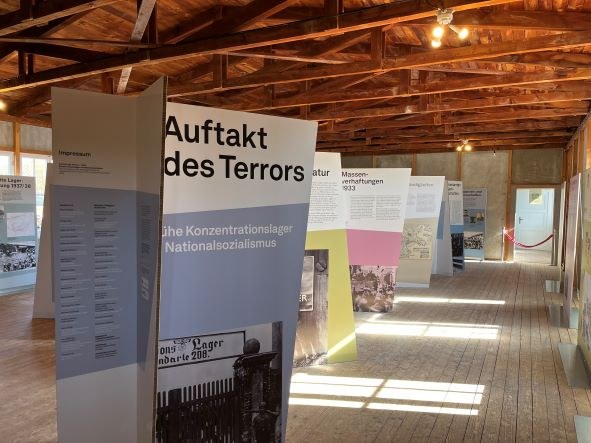
90 years ago, on March 22, 1933, the Nazi regime brought the first prisoners to the newly established concentration camp in Dachau, less than two months after the National Socialists came to power.
Dachau March 22, 2023
"we observe the persistence or return of autocracies, which are careful not to be assimilated to dictatorships. They take care to silence their opponents, they manipulate opinion, they constantly revisit history and cultivate the clash of cultures,"
Speech by Dominique BoueilhPresident of the International Dachau Committee
90 years ago, on March 22, 1933, the Dachau concentration camp was established.
On the occasion of this anniversary, Minister-President Dr. Markus Söder inaugurated the exhibition "Prelude to Terror - The First Concentration Camps under National Socialism" at the Concentration Camp Memorial, in the presence of the Head of the Cultural Department of the City of Munich Anton Biebl, the Director of the Bavarian Memorial Foundation Mr Karl Freller, CID President Dominique Boueilh, and the director of the Dachau concentration camp memorial Dr. Gabriele Hammermann. Also present were Charlotte Knobloch, President of IKG Munich and Upper Bavaria, Ernst Grube, surviving Theresienstadt and President of the Dachau Camp Community, Florian Hartmann, Mayor of Dachau and representatives of various faiths.
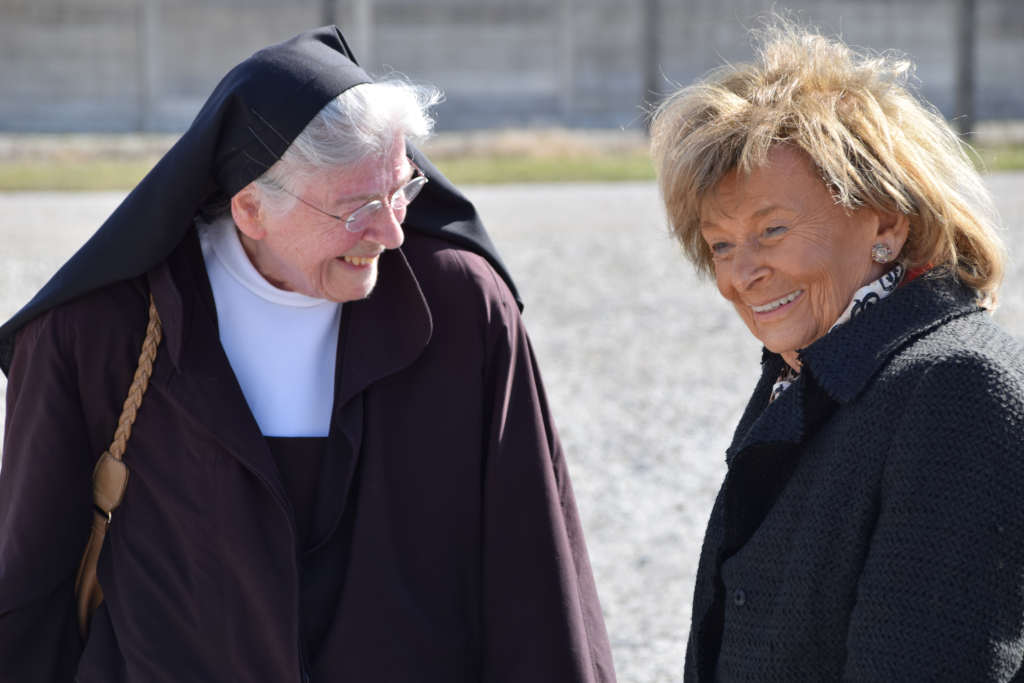 The exhibition presents the most important aspects of the establishment of the first concentration camps and their functions in the process of establishing the Nazi regime. The first concentration camps were one of the most important instruments for enforcing the dictatorship. The first concentration camps are compared to each other in terms of location, legal conditions, organization, custody, groups of prisoners, prison situation, use of force, contact with the public, treatment during the systematization of the concentration camp system, and memory of the first camps in East and West Germany in order to determine similarities and differences. . The Dachau concentration camp differs from the mass of the first camps in that it served as a model for the systematic establishment, conversion and expansion of the concentration camp system in the German Reich. In addition to focusing on the history of the development of the Dachau concentration camp until the expansion in 1937/38, the reconstruction itself is shown as well as reports about the camp and its contacts with the surrounding urban society of Dachau. Finally, the history of the memory of the Dachau concentration camp since 1945 is discussed.
The exhibition presents the most important aspects of the establishment of the first concentration camps and their functions in the process of establishing the Nazi regime. The first concentration camps were one of the most important instruments for enforcing the dictatorship. The first concentration camps are compared to each other in terms of location, legal conditions, organization, custody, groups of prisoners, prison situation, use of force, contact with the public, treatment during the systematization of the concentration camp system, and memory of the first camps in East and West Germany in order to determine similarities and differences. . The Dachau concentration camp differs from the mass of the first camps in that it served as a model for the systematic establishment, conversion and expansion of the concentration camp system in the German Reich. In addition to focusing on the history of the development of the Dachau concentration camp until the expansion in 1937/38, the reconstruction itself is shown as well as reports about the camp and its contacts with the surrounding urban society of Dachau. Finally, the history of the memory of the Dachau concentration camp since 1945 is discussed.
Immediately after the war, victims' associations, including the International Dachau Committee (CID), the Lagergemeinschaft Dachau and the Association of the Persecuted of the Nazi Regime/Federation of Antifascists (VVN), called for the preservation of important places of memory, a demand that became a reality in Dachau with the opening of the memorial site in the spring of 1965. Today, it is visited every year by about a million people from all over the world, including many classes of Bavarian schools.
The President of the CID recalled in his speech the need to analyze and understand the root causes of the Nazi regime to block, in Europe and throughout the world, the return of nationalist tendencies and all acts contrary to human dignity. The proposed new exhibition appears in itself as "an indispensable tool for our understanding and our view of our contemporary world", and must contribute "alongside its role as historical support, to awaken everyone's consciences and guide their choices as citizens for the world tomorrow".
Speech by Dominique Boueilh President of the International Dachau Committee
It is a great honour for me to address all of you as the new President of the Dachau International Committee. I would like to thank you very warmly for the excellent welcome you have given me during our first exchanges and meetings during these last months. I thank Laure Teigny for agreeing to be my interpreter and thus to compensate for my poor command of the German language, and I thank you in advance for your understanding.
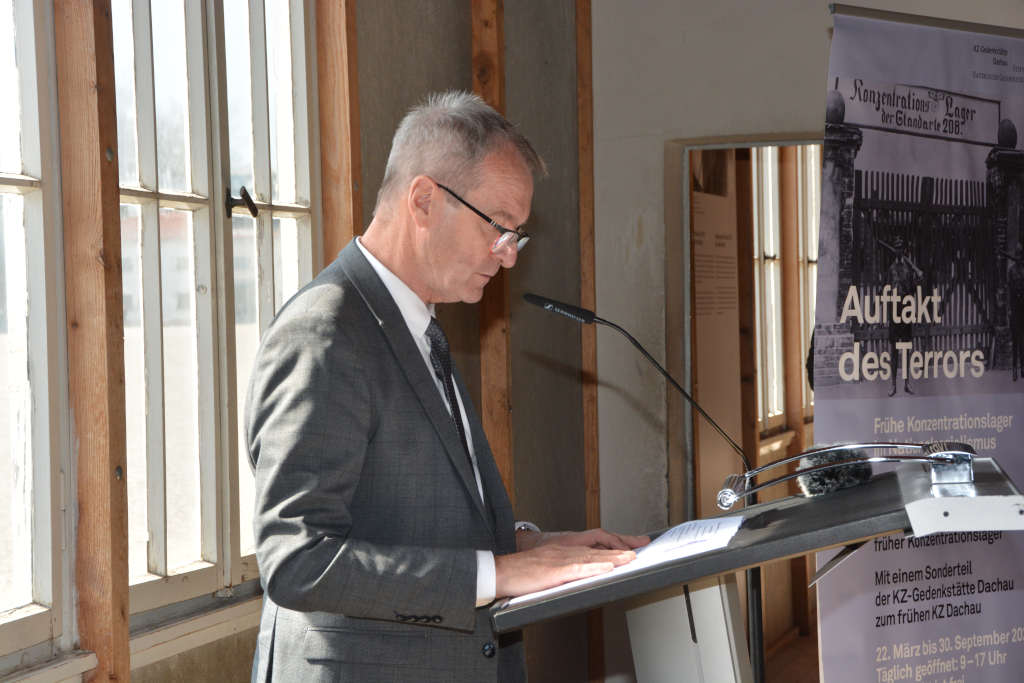 There could not be a better symbol, for my first encounter with you, than the exhibition that is delivered today to our discovery. The establishment of the first concentration camps in 1933, their role in the process of establishing the Nazi regime, and later their tragic function in the greatest crime known to humanity, are all elements that led us, in the post-war period, to build these unbreakable and imperious links that unite today the various actors of the Work of Memory that we are, all gathered here. Work of Memory in the service of historical research, political and social analysis of National Socialism, but above all, Work of Memory which carries the memory of all the victims of the concentration and extermination camps, and which makes heard the voice of the survivors, of all nations, and their oath for a free world imbued with human dignity.
There could not be a better symbol, for my first encounter with you, than the exhibition that is delivered today to our discovery. The establishment of the first concentration camps in 1933, their role in the process of establishing the Nazi regime, and later their tragic function in the greatest crime known to humanity, are all elements that led us, in the post-war period, to build these unbreakable and imperious links that unite today the various actors of the Work of Memory that we are, all gathered here. Work of Memory in the service of historical research, political and social analysis of National Socialism, but above all, Work of Memory which carries the memory of all the victims of the concentration and extermination camps, and which makes heard the voice of the survivors, of all nations, and their oath for a free world imbued with human dignity.
The horror of the camps, the excessive inhuman treatment that the deportees suffered there, the appalling number of victims, often make the general public and the families of survivors remember above all this period 1940-1945 which saw the Nazi concentration camp system deliver its worst misdeeds. This is understandable because it affects our human sensitivity and dignity to the core. This feeling is reinforced by the many testimonies of survivors at our disposal, by the significant development of the many memorials, and by the rite of commemorations.
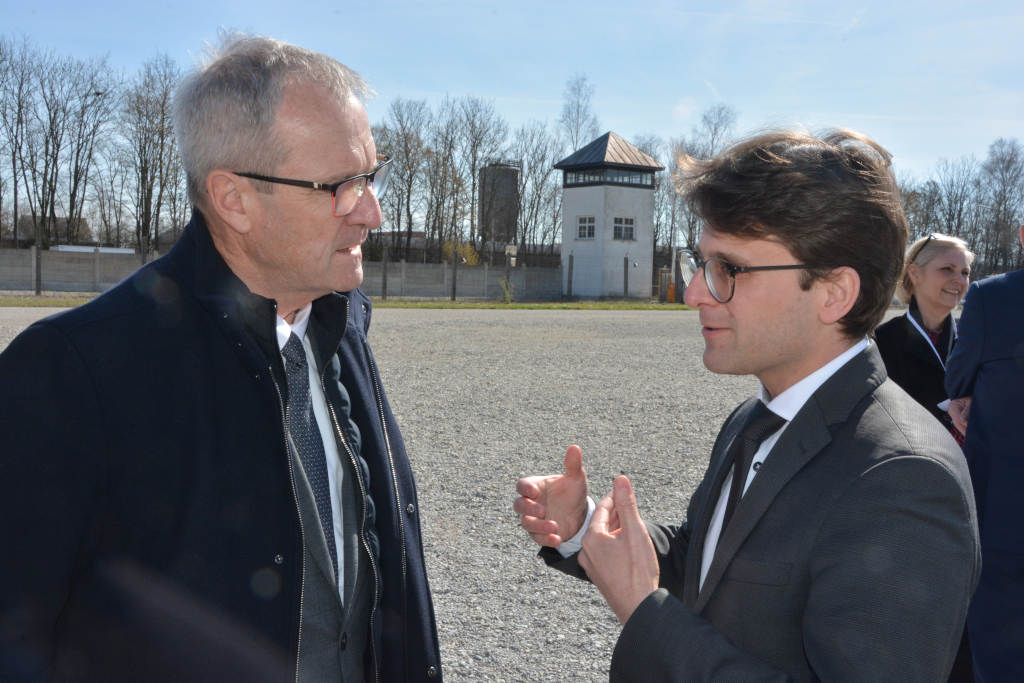 The temporary exhibition "Prelude to the Terror" that is proposed to us today, complements in a necessary way our intimate vision by understanding what preceded the full exploitation of the Nazi concentration camp system. It reveals the gradual process of a regime that sinks into terror and dictatorship, at the centre of a Europe that dreamed of freedom, and then plunges the world, seven years later, into the Second World War.
The temporary exhibition "Prelude to the Terror" that is proposed to us today, complements in a necessary way our intimate vision by understanding what preceded the full exploitation of the Nazi concentration camp system. It reveals the gradual process of a regime that sinks into terror and dictatorship, at the centre of a Europe that dreamed of freedom, and then plunges the world, seven years later, into the Second World War.
In addition to the 'Never Again' commitment, there is the question "How was this made possible?"
This exhibition is also an indispensable tool for our understanding and our view of the contemporary world. The attentive and objective public will not be able to escape making the link with indicators that are still omnipresent, in Europe and in the world: racist and anti-Semitic acts within our societies, nationalist tendencies, mistrust of democracies, acts of war with their share of destruction and civilian victims. More worryingly, we observe the persistence or return of autocracies, which are careful not to be assimilated to dictatorships. They take care to silence their opponents, they manipulate opinion, they constantly revisit history and cultivate the clash of cultures, thus pushing back the space that could very well make them live together.
90 years have passed. Our world is once again crossed by many geopolitical but also national tensions. The certainty or hope that humanity will never dare to return to the extremity of concentration camps, the "Never Again", must not blind us and leave us insensitive or indulgent in the face of the manifestations of terror, large or small, that still persist today. These can lead us to dangers of any other nature and also disastrous for humanity.
This exhibition, alongside its role as a historical support, must help to awaken everyone's consciences and guide their choices as citizens for the world of tomorrow.
We must congratulate the working group that initiated this initiative. The International Committee of Dachau, in its transnational role, is convinced that this exhibition can go beyond its temporary nature to find a deserved and necessary echo with the countries committed to the values that unite us today.
Thank you for your attention.
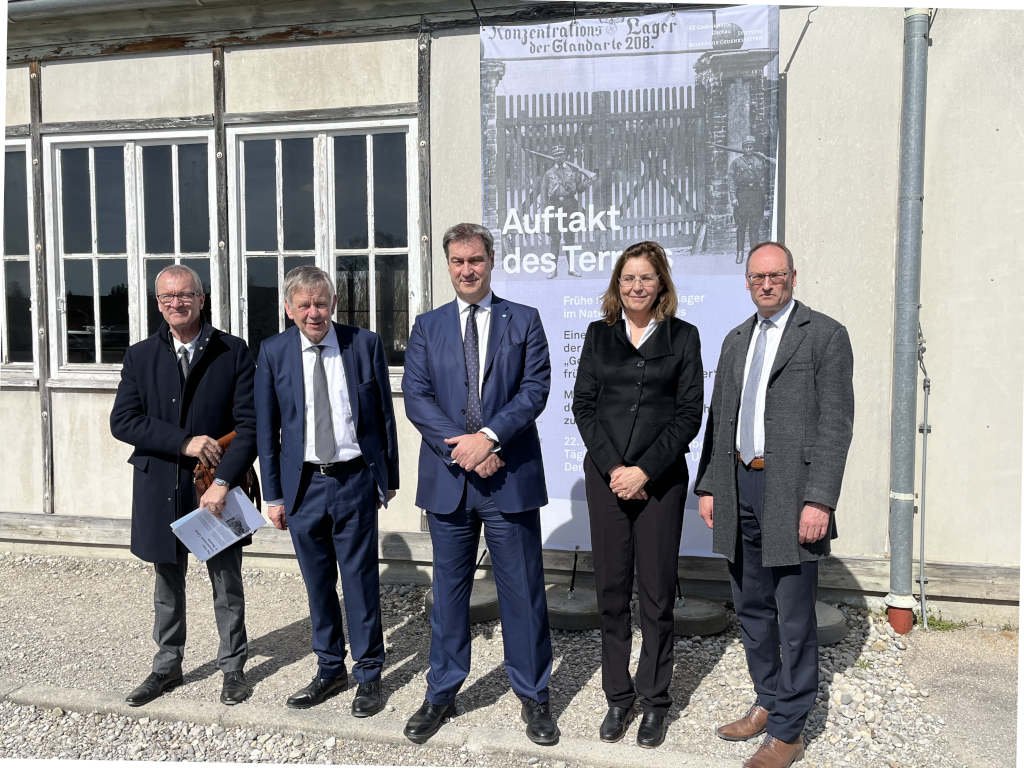 Minister-President Dr. Markus Söder (in the center), (from left to right) CID President Dominique Boueilh, the Director of the Bavarian Memorial Foundation Mr Karl Freller, the director of the Dachau concentration camp memorial Dr. Gabriele Hammermann, responsable du mémorial du camp de concentration de Dachau and Bernhard Seidenath
Minister-President Dr. Markus Söder (in the center), (from left to right) CID President Dominique Boueilh, the Director of the Bavarian Memorial Foundation Mr Karl Freller, the director of the Dachau concentration camp memorial Dr. Gabriele Hammermann, responsable du mémorial du camp de concentration de Dachau and Bernhard Seidenath
More on this topic in German at the links below.
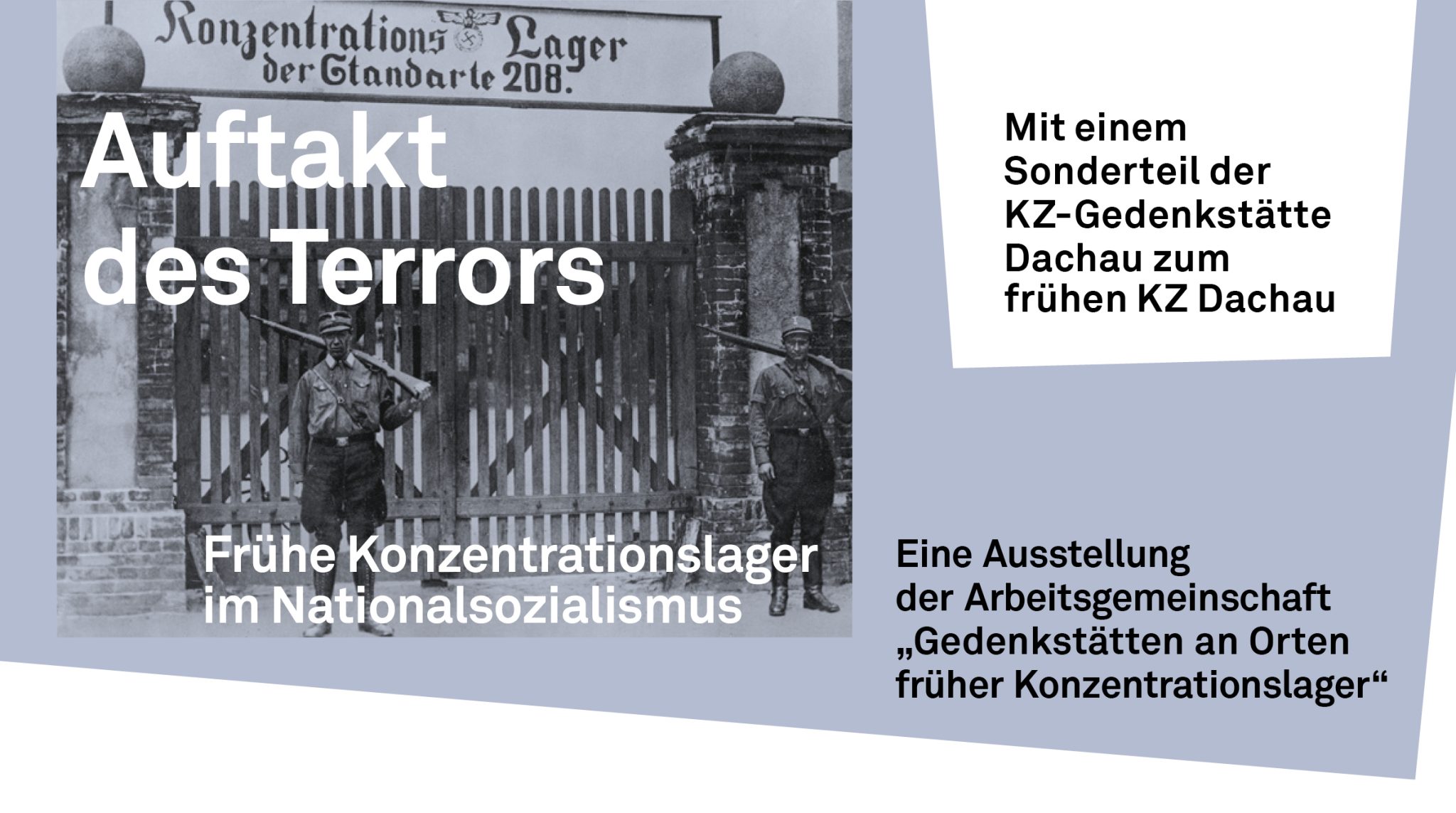
photographs courtesy of: Dachau Concentration Camp Memorial Site




